Barely 40 minutes from central London lies the town that boasts more visible Roman ruins than London, a big castle, a ruined abbey, loads of old churches, and a pretty town centre.
Colchester is probably Britain’s oldest recorded town and at one time, capital for a large swathe of Southern and Eastern Britain. Occupied by the Romans, it became a major city for the occupying forces, destroyed by Boudica, rebuilt and fortified, and in the post-Norman era, gained Europe’s largest castle Keep, was besieged during the English Civil War, and later flourished in the Victorian era.
Today it’s one of the UK’s fastest-growing towns, although still not a city*, but has enough to fill a day, and as everything other than the castle is free to visit, it makes for a very affordable day out as well.
*Colchester was made a city in 2022.
Colchester Castle
Although never given the wards and moats of larger castles, the Norman era Keep is still Europe’s largest such structure.
It was built just after the Norman conquest on the ruined foundations of the Roman era Temple of Claudius, which was itself the largest such structure in the UK at the time. Although in use for centuries as a prison, it fell into disrepair in the 17th century and was bought by the council in 1920/22 and was turned into a newly roofed over museum.
So although the walls are castle, the interior is entirely museum, and a big museum at that. An entire top floor is given over to Roman remains, and a huge mosaic uncovered in 1979. More pots and shards, and stone carvings than you will see anywhere else fill the floor, and a very graphic stone showing a Roman horseman riding over a defeated Briton.
The ground floor mainly deals with post-Roman Colchester, but you can easily fill a couple of hours in here.
The castle is also the only venue to charge an entry fee, which gives you repeat visits for the day, so if you have a bit of time left at the end of the day, pop back for a refresh.
Hollytrees Museum
One museum isn’t enough for Colchester, so next to the castle is another one, this time in a Georgian house.
The building doubles up as the town’s visitor centre, and houses a couple of floors of museum, being really just a few rooms and a small gallery of paintings. One room is packed with old clocks, while another houses a large dolls house, and upstairs is a space for children’s toys from past years, and a room for domestic duties.
Natural History Museum
Housed in an old church, this is a very small museum, really not much more than a few cases in the main nave, but it’s nice to see an old church brought into use for something other than just conversion into flats.
I think I spent 10 minutes here, but it’s just across the road from the Castle, so it’s not as if you need to go out of your way to get to it.
St Botolph’s Priory
Now, this is what I call a proper ruin. Slightly off the beaten track for visitors, but part of the shortcut from the car park for locals, are the substantial ruins of a former Abbey.
Founded around 1100 and one of the first English monasteries to adopt the Augustinian rule, and survived until the Dissolution of the Monasteries. What’s left standing is but a small portion of the site that was here, but even still it’s a proper good ruined church. Later excavations have recovered the layout of the main church, and that is shown in the ground with concrete infills for the missing walls and columns.
The elaborate west front is one of the best surviving examples from this period, although a tad difficult to see as so many buildings cluster around it.
St John’s Abbey Gate
This is also the sole surviving chunk of the town’s other Abbey and was built around 1400 to strengthen the abbey’s defences following the Peasants’ Revolt. Later part of the mansion of the Royalist Lucas family, the gatehouse was bombarded and stormed by Parliamentarian soldiers during the Civil War siege.
Today it’s a free-standing gate in a residential area, and occasionally they open the upper floor for visitors.
Two huge wooden doors lead into the gatehouse, with a decorated ceiling and some modest details inside. It’s mainly worth visiting for completeness, and because it looks so strange perched here in the middle of modern housing.
Roman Circus Centre
Buried under southern Colchester are the remains of the UK’s largest Roman circus, a long open-air oval used for chariot races.
There is a visitor centre, and my pre-visit research had not told me that it’s not open at weekends, which does seem rather odd for a tourist site. So you can’t really see anything, but if you walk from St John’s Abbey Gate via Emperor Road, when you get towards the main Napier Road notice the raised mound in the grass. It marks the central axis of the Roman Circus still buried underneath the ground.
Had it been possible to excavate the entire site and turn it into a museum, it would be the largest in the UK.
The Roman Church
Sitting right next to the county police station are the ruins of a modest-sized Roman building that was discovered in the 1970s. If you read the old information sign, then this is a Roman church probably built around 320-240 CE. If you read the more modern sign on the other side, then this might be a Roman church, or they think it could be a Mithraeum similar to the one in London, a temple for Roman soldiers built as much as 50 years earlier.
The Roman Wall
A very long length of the Roman Wall runs along the western side of the old town, and you can walk the whole length of it. It runs alongside the modern main road bypass – the town is very car-centric — down the hill to the riverside valley. A few sections are missing following a collapse, but otherwise, this is one of the longest intact and visible walls in the UK. A set of steps up to an ex-church turns out to be the result of a Roman drain, but about halfway along is the Balkern Gate.
A second length of the heavily repaired Roman Wall can be found to the south side of town, next to Colchester Town railway station.
And the Balkern Gate
This is the largest surviving gateway in Roman Britain and was built where the Roman road from Londinium intersected the town wall.
Although it is the best-preserved Roman gateway in the country, it only survives in part. The remaining gateway which we see today is the south-side arched footway; however, the remains of a guard tower are also visible. The rest of the gateway has been overbuilt by the pub next to it – although you can see a bit more underneath the patio.
Jumbo the Water Tower
The other tallest landmark in town along with the Town Hall’s clock tower is a huge water tank. Built in 1883, it was given the derisory nickname of Jumbo after a London Zoo elephant by the local vicar who hated it. The nickname stuck but as a term today of affection.
It’s a huge brick structure, with a brick clad spiral staircase in the middle, which also helped support the weight of the water, when it was in use. It ceased to be of use in 1987, and was nearly converted into a home in 2001.
Today there are various attempts to turn it into some sort of visitor centre, and if they can figure out access the views from the are going to be spectacular.
The Dutch Quarter
A short cluster of streets makes up the Dutch Quarter, an area of town inhabited by Flemish Protestant refugees fleeing religious persecution having been defeated in a rebellion against Catholic Spain.
The houses pre-date the Dutch though, being mainly former Jewish and other migrants that were taken over by the Dutch. Regenerated in the 1970s it’s a pleasing cluster of streets to wander around generally soaking up a bit of architectural atmosphere.
Roman Theatre
This is a small room in a small house and you can try to peer through the glass to see inside. Not much to see sadly as the picture on the wall makes it look really impressive. If you look carefully at the brick paving outside you might notice some bricks are slightly darker than the others, and they mark out the curve of the theatre wall.
Scheregate
Colchester’s only surviving medieval gate, to be found between some shops and at the top of a steep flight of steps. Mainly worth seeking out to look to the side at the shop window for Timpson – it’s a medieval door, now preserved in the window of the modern shopfront.
Northgate
Nothing survives above ground of the original Roman Wall and gate here, but there is a slice of the medieval wall that’s clearly visible on the western side of the street. However, there’s something here that I am willing to bet thousands of people regularly walk past without seeing, and I only spotted it from the western side of the street.
Between the two shops on the eastern side is another section of that medieval wall.
Churches
An ancient town like this has churches, absolutely loads of churches.
Most of them are Anglican, which means the doors are locked, because in Anglican Christianity, God is only available by appointment, whereas the Catholic churches tend to keep their doors open all the time.
St Botolph’s – next to the ruined priory and has all the appearance from the outside of a grand church, even if the front is now hidden behind a cluster of shabby shops. The back is worth looking at though, for the graffiti that’s been carved into the brickwork.
Lion Walk United Reformed Church – right in the centre of the modern shopping centre is just the spire of the old church, repaired after a major earthquake hit the town. The rest of the church vanished to a set of modern rooms in the shopping centre.
St Martins – a medieval church to be found down on a quiet side street, and dates from the 11th century with mostly 14th century rebuild. Now under the care of the Churches Conservation Trust and currently closed to visitors.
Holy Trinity – another one nestled in the middle of the modern town centre, and also disused being now a community centre. And closed when I visited, but the chich tower is worth looking at being a Saxon build that was added shortly after the church was built in the 1100s, reusing Roman ruins.
St. James the Less and St. Helen – A Catholic church, so push the door and go inside to the heady aroma of incense. An unusual rich red ceiling dominates and dotted around are a couple of additional shrines and loads of stained glass windows. A war memorial in a side room by the door has a remarkable sculpture on top that looks almost translucent.
St Helens Chapel – this is an 11th-century chapel built on Roman ruins within the site of the old Roman Theatre and was rebuilt by the Normans. It’s never been a formal church and has had a lot of varied use over the centuries. Today it’s open to a Greek Orthodox community who are hoping to buy it from the current owners. Inside through the side door and it’s a room that is packed full of icons along all the walls, a lantern from Jerusalem and a library of books. Although the current occupants are new, it has the air of how the chapel would have looked some 900 years ago.
Some random things
Look for the bronze panels in the ground marking all the interesting historical locations, and on the walk from the station, there’s a model of the old Roman city, and a more recent elephant theme on the route.
Colchester Town Hall in the centre of town is exactly the sort of building you expect a rich Victorian town to build, although the current building was, just about, opened in Edwardian times.
Salisbury Avenue and some nearby roads near the police station has a number of examples of cast-iron street lamps with original pre-war fittings.
If using the underpasses do note the murals on the slopes, created by the husband and wife team of Henry Collins and Joyce Pallot in the 1970s.
The Bull pub next to Headgate, with a really big model of a bull on the front.
Colchester’s war memorial is very big and very noticeable.
There’s “something” hidden behind hall walls next to Firstsite that couldn’t quite be seen, apart from the castellated top peeking above the wall. Very curious.
When coming from the station to town look at the bridge over the river, there’s a historic plaque on it from when it was widened.
Castle Park is the heart of town, with a lot of space and the river in the middle. About a billion squirrels seem to live here as well.
Things not visited:
Bourne Mill (closed in winter)
Getting to Colchester
There are fast trains from Liverpool Street station, also calling at Stratford, so people in north/east London can avoid paying for a trip into Zone 1.
I visited when there was a £5 per ticket offer on Greater Anglia, which is still available for tickets purchased by the end of October 2021. Otherwise, a return trip averages £27 before any railcard discounts are applied.

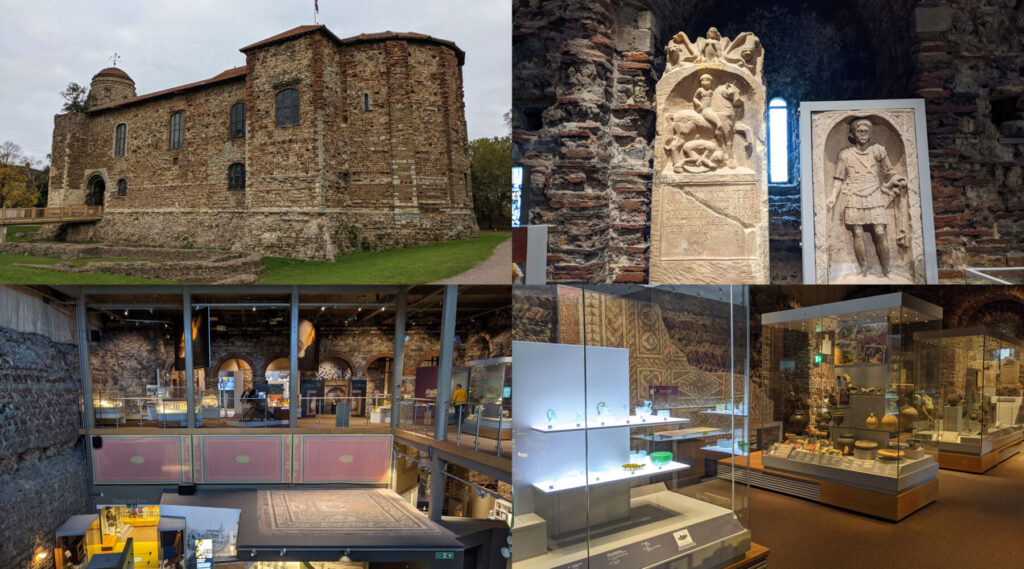
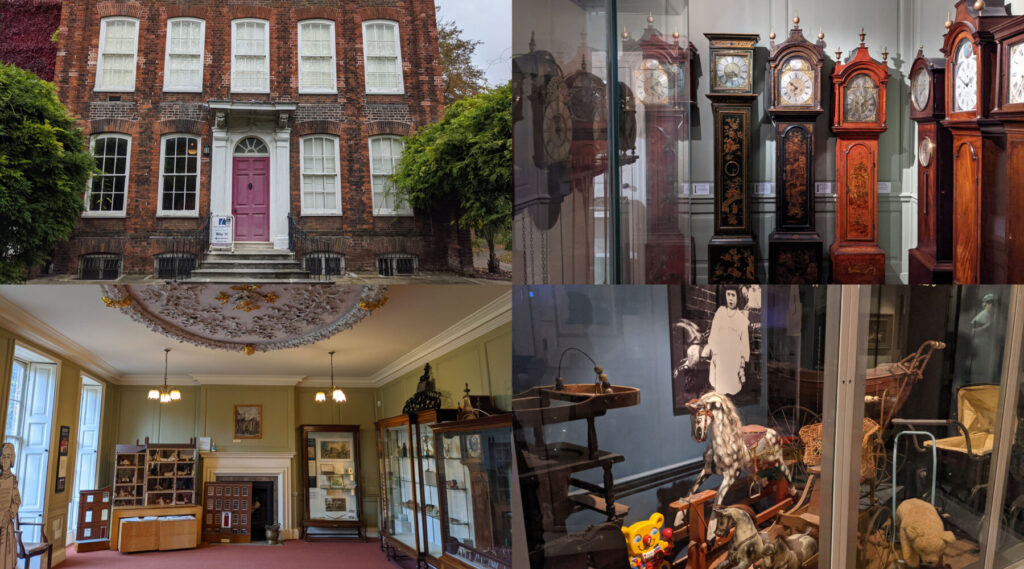
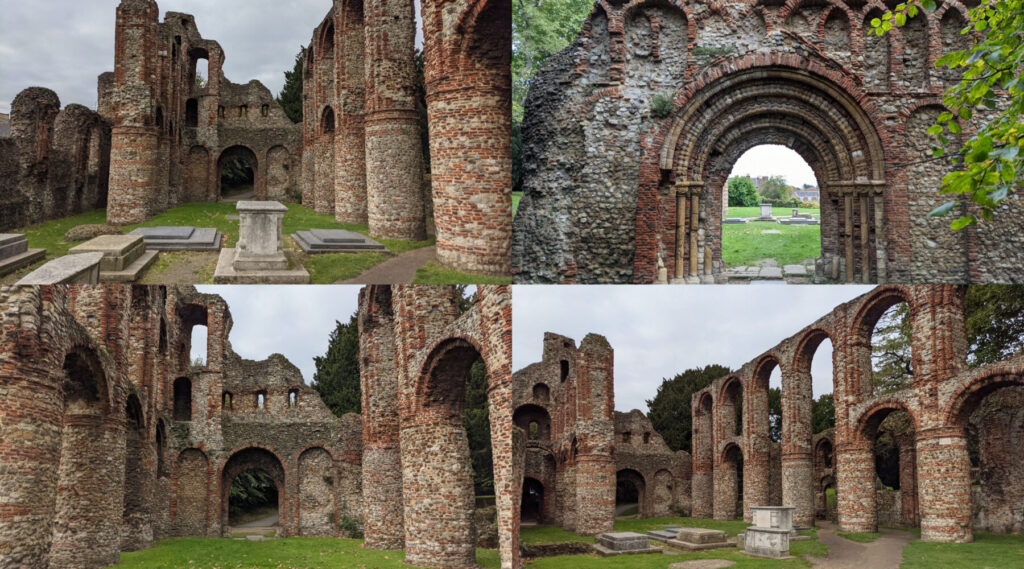
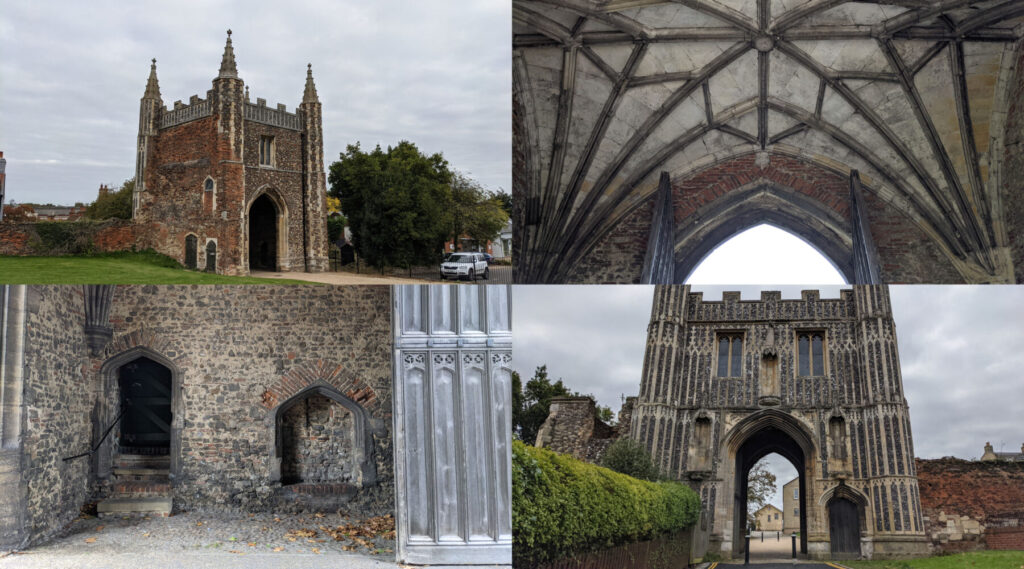
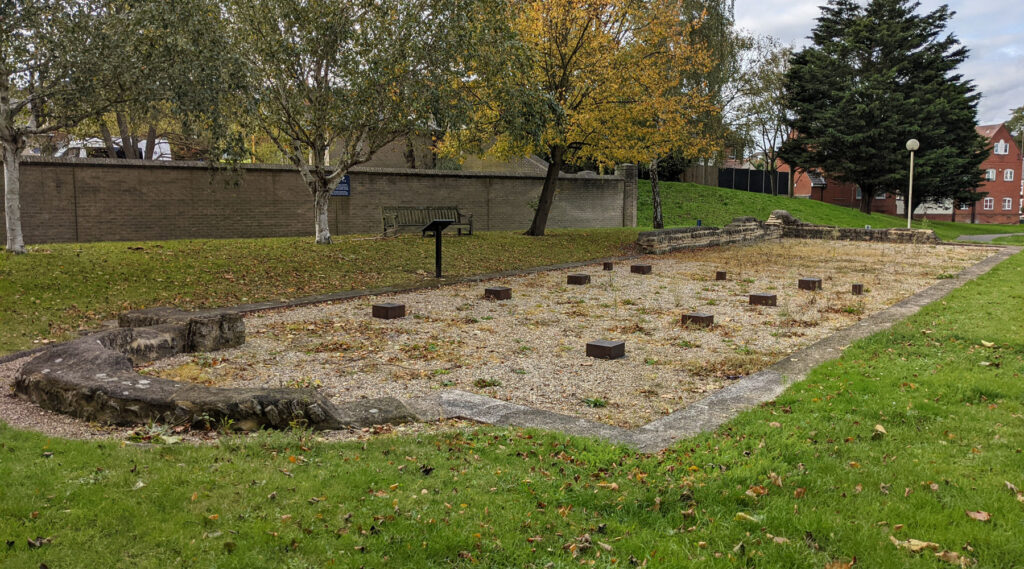
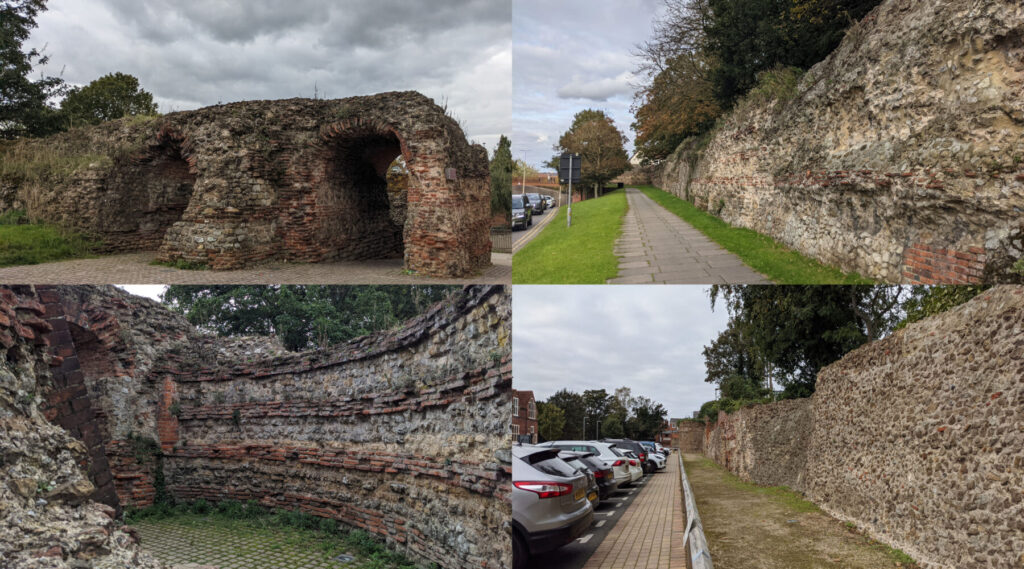
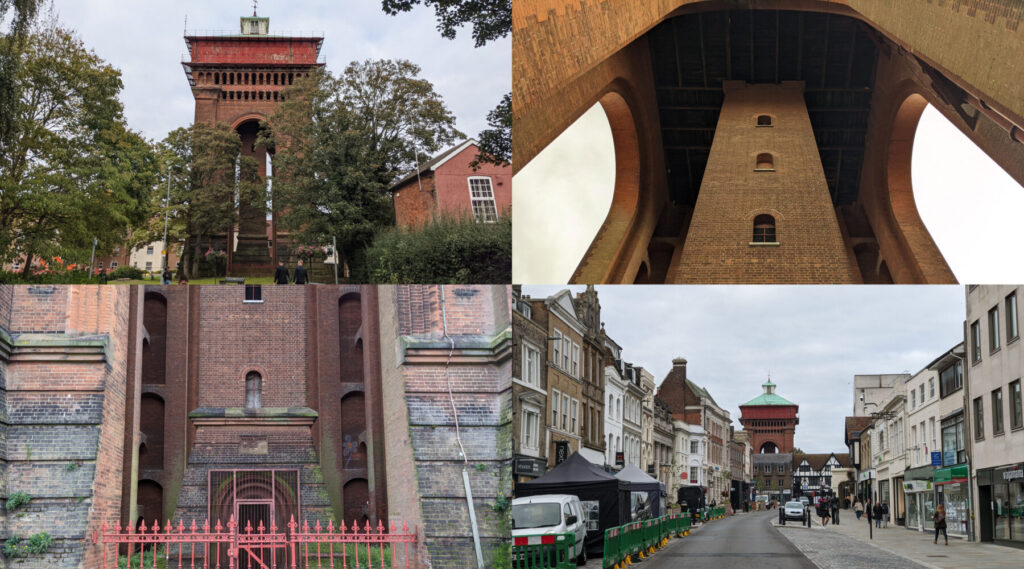
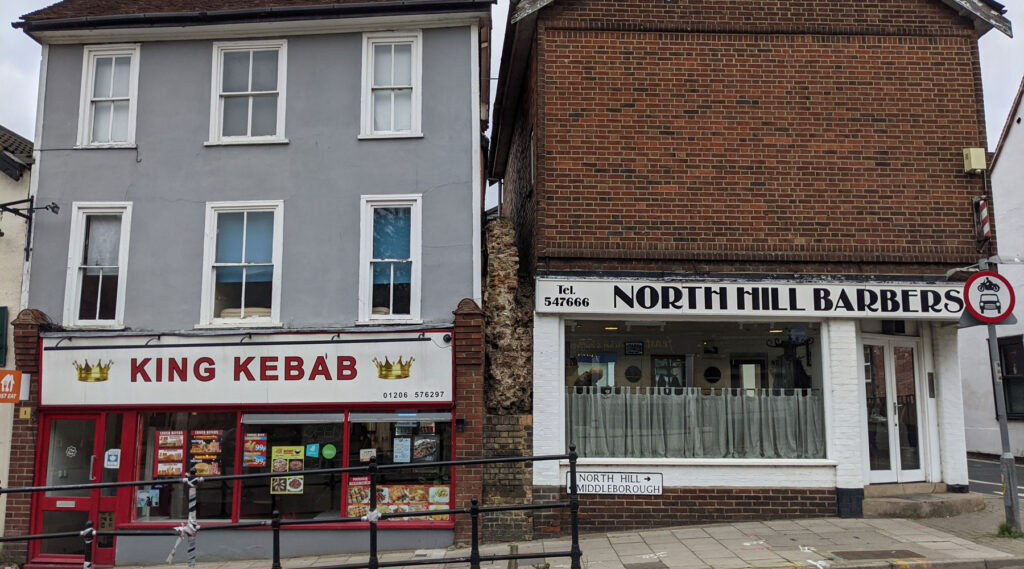
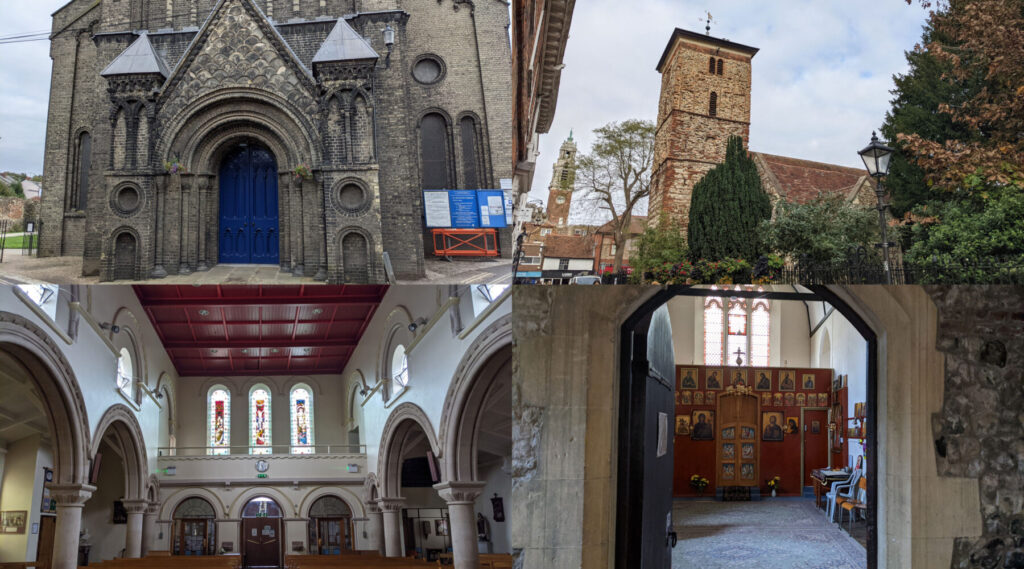






Ian thanks for sharing. This will give me things to look for on my move
Ian, very interesting. That hidden castellated structure is in the garden of the Minories cafe and is a folley.
https://www.google.com/search?q=minories+cafe+garden&client=ms-android-vf-gb-revc&prmd=minxv&sxsrf=AOaemvLBKoUyFX65-avGHfFyp3mRy2deKQ:1635669240778&source=lnms&tbm=isch&sa=X&ved=2ahUKEwj32cPgnvTzAhUEhlwKHaGoDvwQ_AUoAnoECAIQAg&biw=360&bih=657&dpr=3#imgrc=ylMqHcXFAokmAM
The Roman Circus Visitor Centre is a small, independent venue explaining the chariot racing that took place here nearly 2,000 years ago. Kindly provided by Colchester Archaelogical Trust, the ground floor of their office building has been given over to showcase the circus, including a 1:100 scale model of racing track, and much more besides. As the Visitor Centre is not part of any national or regional funded organisation, nor part of the Borough Council, it relies upon the goodwill of volunteers to run it. From Easter through to the end of September, the Visitor Centre is open Tuesday to Saturday, 10am to 4pm, with informative guided tours at 12 noon and 2pm. During the rest of the year it is open Tueday to Friday 11am to 3pm. Do check the website for up-to-date information, http://www.romancircus.co.uk – Worth a visit!
“Most of them are Anglican, which means the doors are locked, because in Anglican Christianity, God is only available by appointment..” – haha!